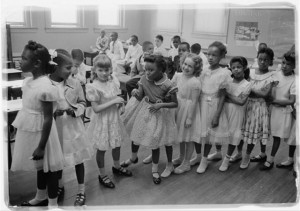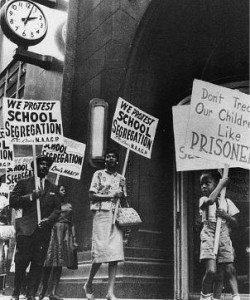Week Eleven: Omeka Exhibit
This exhibit will be a collection of written and visual sources collected from the 1950’s and 1960’s. These primary and secondary sources will reveal the conditions of the country and of the District of Colombia prior to and after integration of schools. By placing visual images, written accounts, videos, etc. by one another conclusions about the history of school integration in Washington DC can be made. Below is a list of the items that will make up this exhibit:
1. A written newspaper article on the history of Washington DC schools. http://www.washingtonpost.com/wp-srv/metro/interactives/dcschools/timeline/?hpid=topnews
2. A written case brief on Bolling versus Sharpe. http://www.oyez.org/cases/1950-1959/1952/1952_8
3. A photograph depicting Barnard School. One of the first schools to integrate following Bolling versus Sharpe.
4. This interactive site provides a background on several different schools and their conditions prior to integration. http://www.wdchumanities.org/bigreadexhibit/exhibits/show/dcsegregatedschools/ward-1
5. This photograph shows a group a protesters in Washington DC. It first appeared in a local newspaper. It reveals the tense conditions that existed at the time.
6. This documentary although it does not specifically focus on Washington DC it does capture the attitudes and conditions that existed at this time. Through interviews first hand accounts are captured from this time period. https://www.youtube.com/watch?v=U9ACS4PgDFA
Together the listed items will provide background on the conditions of the country prior to school integration. This collection will reveal why school integration eventually came about and how the previous conditions of the country influenced court cases such as Bolling versus Sharpe. Finally by analyzing these sources and understanding how they influenced integration the effects can be understood better.


Leave a Reply